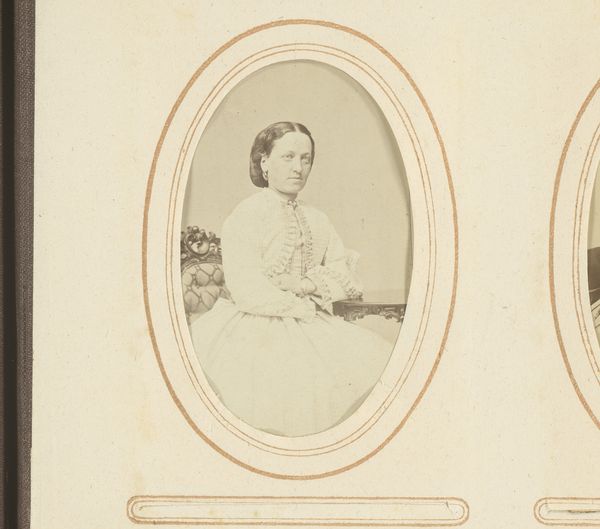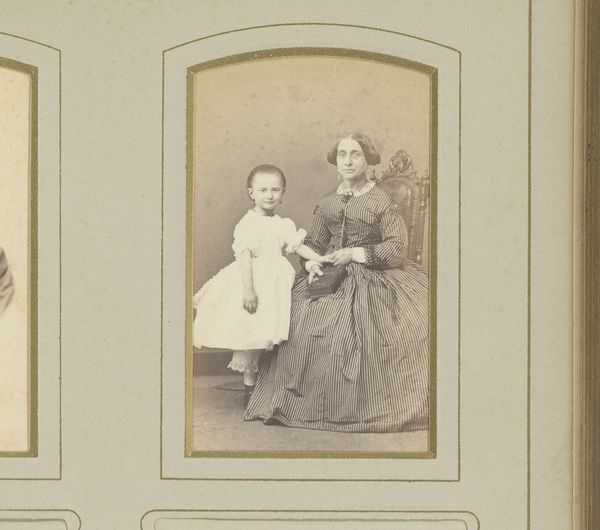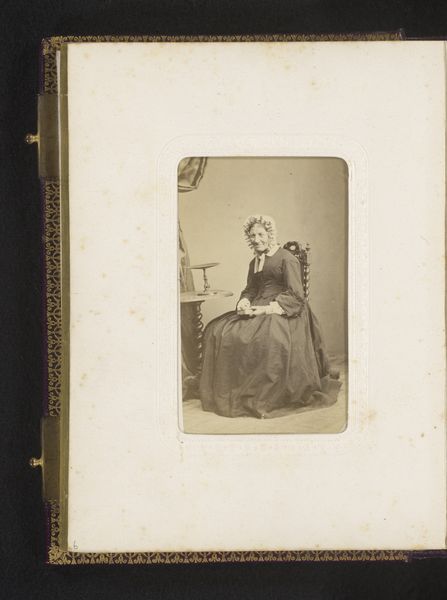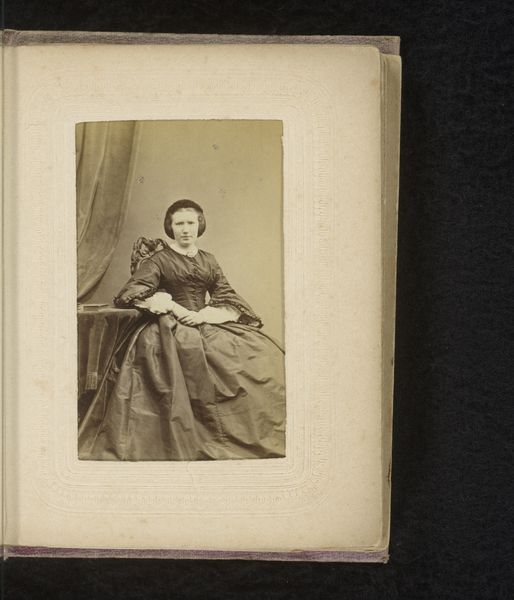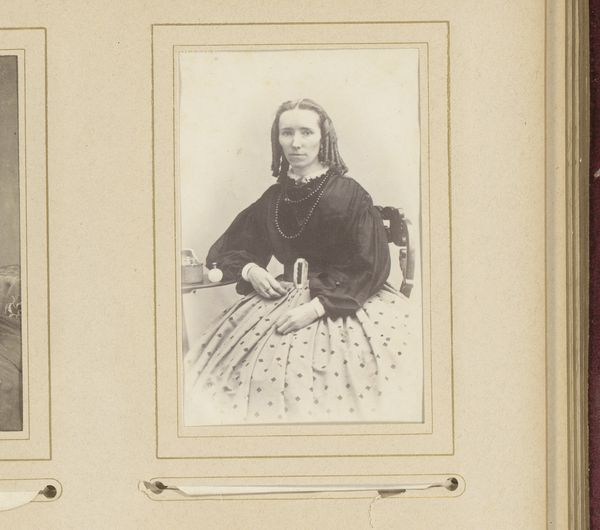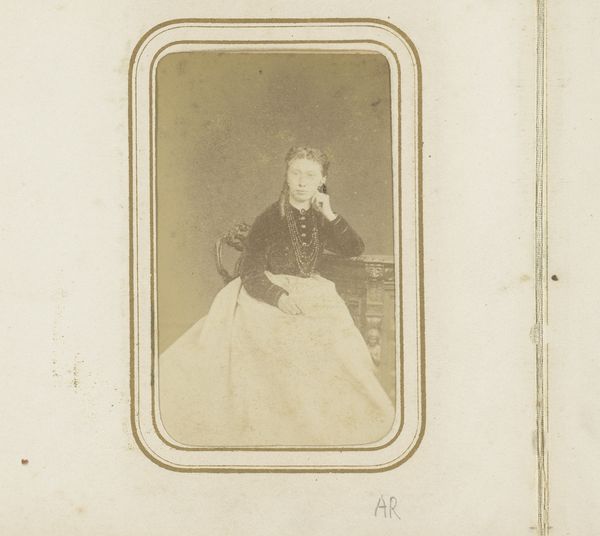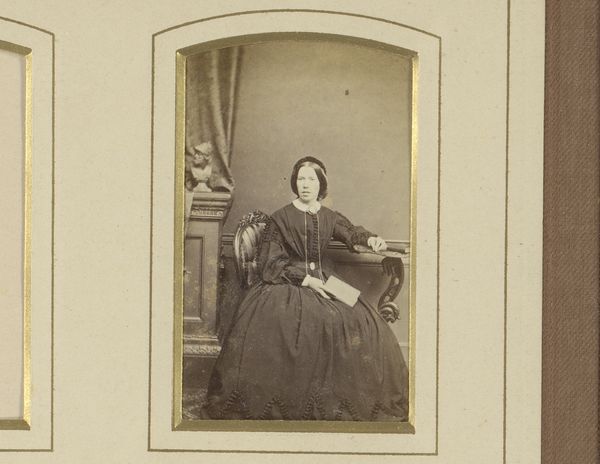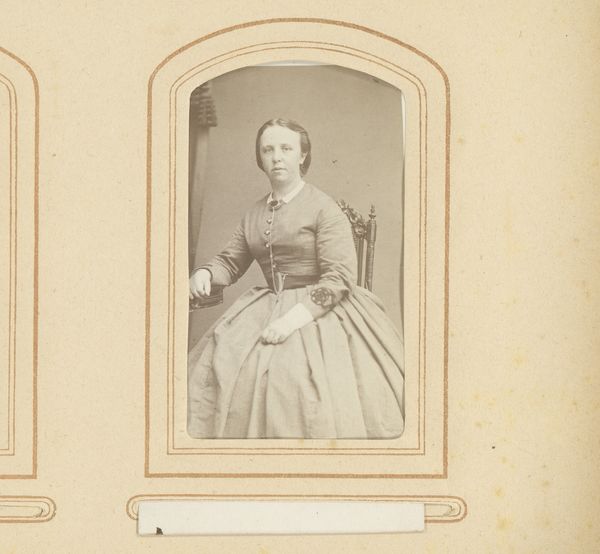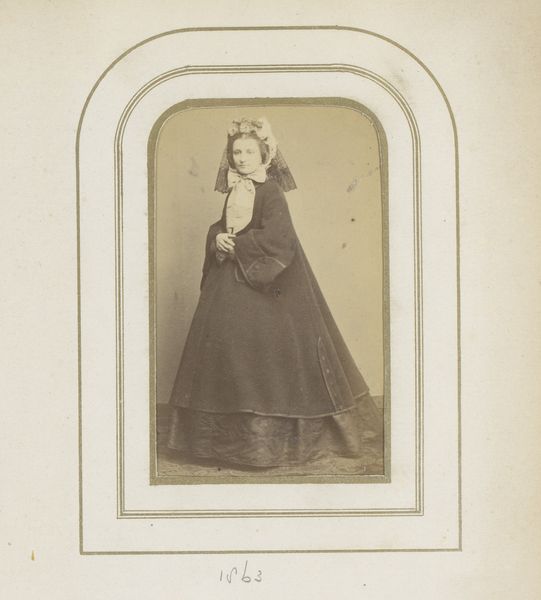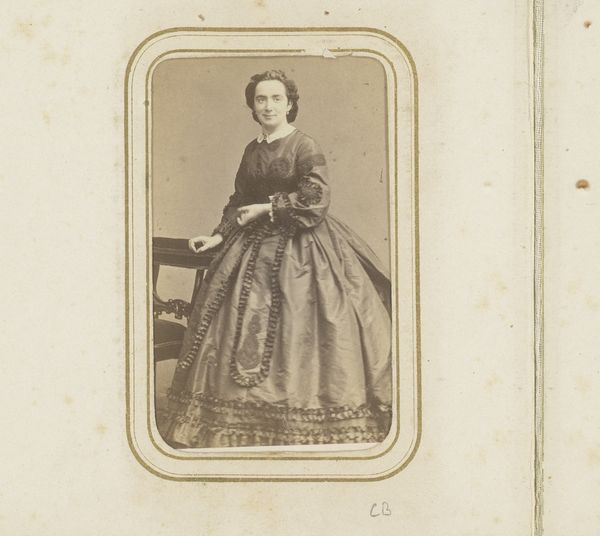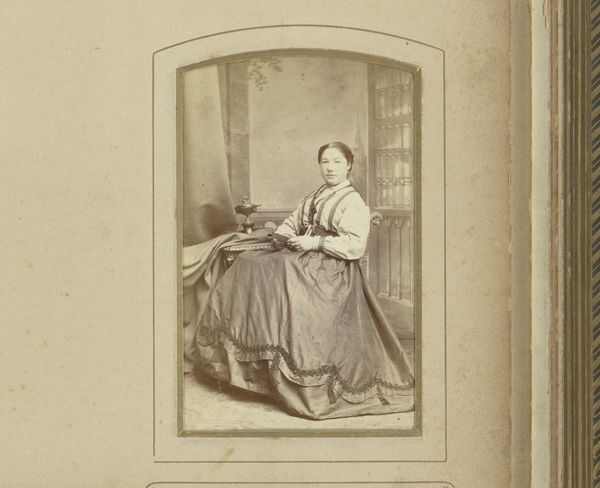
photography
#
portrait
#
photography
#
genre-painting
Dimensions: height 84 mm, width 54 mm
Copyright: Rijks Museum: Open Domain
Curator: This portrait, known as "Portret van een zittende vrouw met pijpenkrullen," dating from around 1860 to 1900, presents an intriguing figure. What strikes you first? Editor: The tightness. The woman's pose—arms crossed so rigidly, shoulders hunched—coupled with the almost monochrome palette gives it a reserved, almost mournful quality. Curator: Precisely. The composition certainly enforces that impression. Observe the formal, contained pose; the tight oval vignette further restricts the subject, directing focus squarely onto her face and expression. Editor: And I wonder what constraints the photograph, as a relatively new medium, placed on its subjects? The stiffness we see might be less about emotional reservation and more about the technical limitations of long exposure times. This highlights the social and economic forces which determined who could participate in image production at this time. Curator: An astute observation. The medium itself undeniably shapes the message. Consider the delicate balance of light and shadow, the subtle textures captured despite the limitations, like her hair curls or even the weave of the dress. Editor: The staging feels very deliberate too. Notice how much visual real estate is dedicated to her dress? Her voluminous skirt becomes emblematic of the socio-economic status attainable for women through marriage at that time. Curator: The visual impact, regardless of the reason for such presentation, undeniably invites contemplation about its subject and context. The photographer's choices clearly invite reflection and, potentially, judgment, from contemporary society toward the depicted woman. Editor: It is hard not to see her beyond our contemporary expectations and sensibilities about visibility and representation in the public realm. And, the constraints of image-making placed on many at the time certainly challenge us to contemplate this work's historical context. Curator: Indeed, even just analyzing these specific elements heightens our engagement with not only what we perceive, but also how the visual construction reflects particular beliefs of the era. Editor: Definitely; these insights around this photography serve to ground us in a deeper historical understanding of it.
Comments
No comments
Be the first to comment and join the conversation on the ultimate creative platform.
